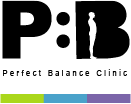What is functional?
At Perfect Balance Clinic, we talk a lot about function and functional movements, but what do we mean?
You can walk into any gym and no doubt there will be an instructor talking about how a certain movement is functional, but it often has no relevance to their client’s everyday life or activities.
What makes Perfect Balance Clinic different?
Firstly, we look at the anatomy and the range of movement around each joint in a static position. I use the word joint quite loosely, for instance, the ankle joint can be broken down into further smaller bone intersections that create the ankle joint. All of these have different movements available and if one doesn’t work properly, this will affect the others.
Once we have tested the movements available in a static position, we then look at these movements in the different planes of movement. ‘Plane of movement’ refers to where the movement takes place: frontal, sagittal, and transverse or in front, to the side and around/behind you. There are then sub-divisions of this when we factor things like internal and external rotation at the joint, planta and dorsiflexion, and abduction and adduction whilst moving in the different planes of movements available.
What we then do is create strengthening exercises for these movements. We create the same response that the body would go through at the joint level. For example, for someone to kick a football, we would create the movement at the joint in the angle that mimics that, then move up to the knee, and finally the hip. It won’t look like a kick, but each joint will move the way it should do!
How does this help function and functional movement?
If, at each joint, we can strengthen a movement, then when the actual movement (kicking a football for example) is occurring, the body will be stronger, have less chance of injury, and become more effective. Remember the key rule:
movement + instability = injury + pain
By improving the first two points in this equation, then it will reduce the latter.
For more information about Functional Movement
If you would like additional information about the Functional Movement or discuss how we may be able to help with your queries, please contact us using the form below and we will get back to you as soon as possible.










